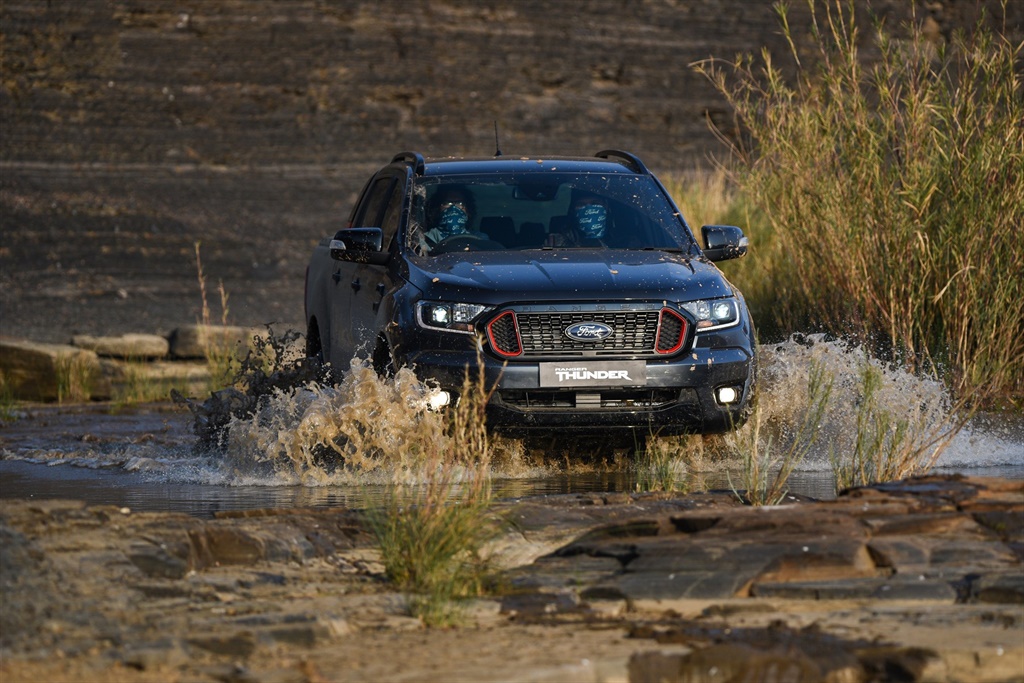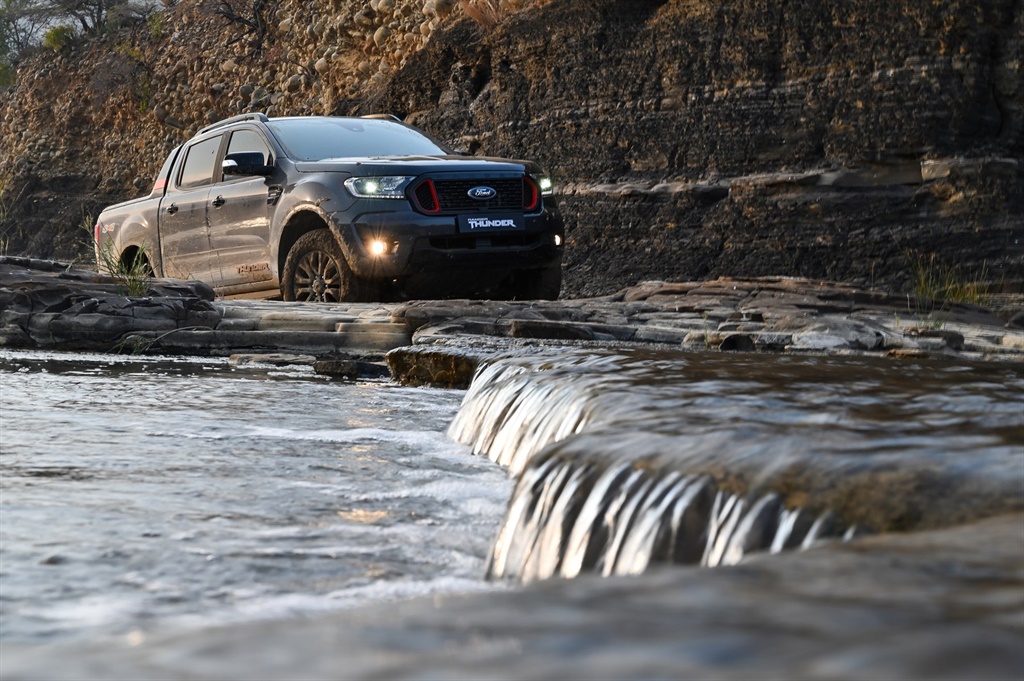
• Ford SA gives tips on how to drive through flash floods in the event of an emergency.
• The Ranger has been designed to handle a wading depth up to 850mm.
• Drive through water in an emergency ONLY, and not as part of normal driving.
• Always check your surroundings for the best route and drive through water slowly.
Gauteng residents are familiar with thunderstorms and flash floods during the warmer months of the year. The prevalence of flash floods were not limited to Gauteng and surrounding provinces, Cape Town recently experienced heavy downpours.
These adverse weather conditions can create chaos for drivers, often slowing traffic movement in the city and turning gravel roads into slippery mud.
It can be a daunting task even for experienced drivers to be reluctant to navigate flooded roads and low bridges, especially in areas they are unfamiliar with.
The folks at Ford South Africa say their Ranger bakkie is designed to handle driving conditions such a road covered in water due to it being capable of handling a wading depth of up to 850mm.
Image: Quickpic
Clever packaging and design
Carmaker's can protect the important parts of a vehicle with good packaging and design. Ford says its engineering team packaged all the important parts required to keep the engine and electrical systems up and out of any water.
Therefore, the air intake, alternator and electrical components were positioned as high as they could be in the engine bay.
The front-end design is also engineered to aid in wading. Hitting unseen flood water even at a mere 25km/h can severely damage a vehicle that is not designed for water wading. The design of the front end of the Ranger disperses the force of the water to maintain traction to its tyres.
Also, when wading through the water, the front end creates a bow wave to push water away from the engine's air intake.
Safely Wading through Water
When the need arises, would you know how to safely wade through flood waters?
1. Check your surroundings and the depth of the water
This is the most important part of water wading
If you can, get down from your vehicle and inspect the area you are crossing. Ask yourself these four questions during the inspection to help yourself decide if you want to proceed. Can you tell the depth of the flood? Are there any obstacles in the way? Can you see a suitable exit point? Is there a water current?
With regards to Ford's bakkies, the carmaker says one can use the Ranger's wheels to let you know if the depth of the flood water is safe to cross or not. For 4x4 Rangers the water depth should not cross the fender arch above your front wheels. For standard 4x2 Rangers, the water should not cover the whole tyre. If there are obstacles in your way or if you cannot see a suitable exit point, then don’t cross. You want to keep going in a single direction to avoid hitting curbs. Seeing the exit point or where the flood subsides is important, because the depth could increase as you progress through the water.
2. Set your vehicle up
Certain models of Ranger are equipped with four-wheel-drive which can be easily activated. Firstly, shift into Neutral (N)then, using the Electronic Shift-on-the-fly, switch to the four-low (4L) setting. This will activate four-wheel-drive and the low range gearbox, providing power to all four wheels and keep you in a lower speed while still being in the optimum power band.
3. Slow and steady
This is not a race. Move through the water slowly to create a small bow wave in front of your vehicle. Your main objective is to maintain that bow wave, and not let the water go over the bonnet. If water begins to wash over the bonnet, you are going too fast.
4. Let the vehicle do the work
When wading, remember your speed and be gentle with the throttle. This also goes for exiting the flooded area, do not suddenly accelerate out. Let the Ranger’s capabilities pull you out of the water. It’s tempting to want to get across as quickly as possible and burst out of the water on the other side, but you risk bumping into submerged objects with undue force or creating issues for yourself.
5. Check your vehicle
To ensure your safety as you continue with your journey you can do these simple tests to check if important systems were not affected by the flood water.
• Press the brake pedal lightly to check the brakes are functioning. Give the brakes some time to dry off.
• Check that the hooter works.
• Check that the headlamps and the brake lights are working.
• Check that the power steering is working and requires no additional effort to turn.
Image: Quickpic
After any water crossing, make sure to give your vehicle a thorough wash. It is also recommended to visit a dealership to get your vehicle inspected. Remember, your safety is paramount - only cross deep floods and low-lying bridges if it is absolutely necessary.
"The first rains can often be even more hazardous than wet weather in the middle of a rainy season because it lifts the oil and debris that collected over winter,"says Derek Kirkby training director at Driving Skills For Life.
"Leave a greater following distance, avoid water that has pooled on the roads and brake earlier and with more caution. Give yourself more travel time so you do not have to rush in bad weather."
Compiled by Sean Parker




 Publications
Publications
 Partners
Partners
















